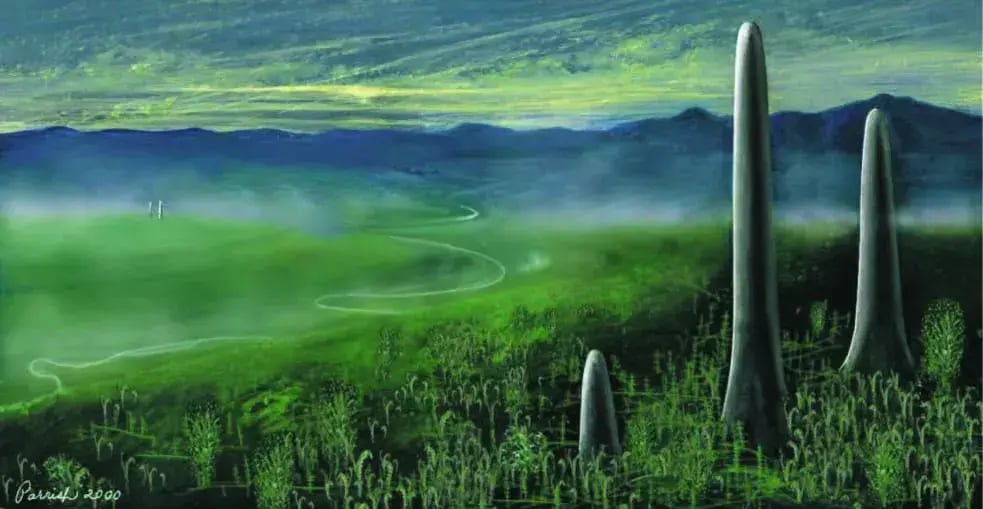For about 100 years, scientists have debated the correct placement of Prototaxites on the tree of life on Earth. Prototaxites were the largest terrestrial organisms of their time—375 to 420 million years ago. They resembled tall trunks, reaching heights of up to eight meters and a diameter of one meter. Initially, researchers believed they were giant fungi, trees, or lichens, but their structure and chemical composition did not fit into any of these categories.
Neither plants nor fungi
Hypotheses about their identity ranged from giant fungi to algae or even early coniferous trees. In 2007, chemical analysis of fossils supported the idea that they were fungi, meaning they were among the largest fungal organisms ever.
Many researchers see Prototaxites as key to understanding events during a critical transition point in geological history when plants and terrestrial creatures made their first steps on land. Prototaxites likely played an important ecological role, with their massive structures possibly acting as windbreaks or providing shade and shelter for small terrestrial organisms.
A study by a research team from the University of Edinburgh, recently published in bioArxiv, suggests that Prototaxites do not belong to any major existing group and may deserve their own kingdom.
Unique characteristics of Prototaxites
The research team examined fossilized remains of the species Prototaxites taiti, found in Scotland. Prototaxites did not contain chitin, a structural polymer commonly found in fungi. The researchers reported that Prototaxites were composed of intertwined tubes about 50 microns in diameter, forming a trunk-like structure distinct from known fungi or other organisms found in the same region.
Prototaxites contained compounds similar to lignin, a molecule characteristic of woody plants, but exhibited a heterotrophic lifestyle—consuming other organisms for food—more typical of fungi.
"The assumption that they belonged to the fungal kingdom was somewhat vague, especially given the nature of the fossils and their enormous relative size," noted Brett Summerell of the Sydney Botanic Gardens in Australia. Kevin Boyce, a scientist who previously classified Prototaxites as fungi, stated that, based on current information, "there is no good place for them" in the fungal kingdom.
Current assumptions suggest that Prototaxites may represent an extinct evolutionary branch that left no modern descendants.
Mysterious growth and ancient environment
One of the most intriguing aspects of Prototaxites is their mysterious growth form. Fungi typically grow as a tangled network of filaments in the ground or within decomposing material. Prototaxites, however, were composed of densely packed tubes that provided structural strength and allowed them to grow tall.
Get the Ynetnews app on your smartphone: Google Play: https://bit.ly/4eJ37pE | Apple App Store: https://bit.ly/3ZL7iNv
The ancient world in which Prototaxites lived was vastly different from today. Early land plants were small and low to the ground, and vertebrates had not yet evolved. Arthropods, such as insects, dominated terrestrial life.
Many questions about Prototaxites remain unanswered: How did these massive structures efficiently disperse their spores? Did they form symbiotic relationships with smaller plants? What led to their disappearance?


